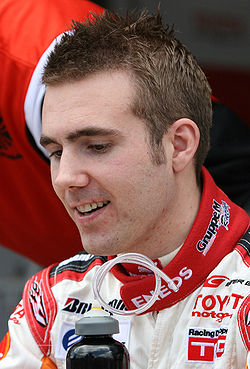The 2003 International Formula 3000 season was the thirty-seventh season of the second-tier of Formula One feeder championship and also nineteenth season under the International Formula 3000 Championship moniker. It featured the 2003 FIA Formula 3000 International Championship with titles awarded for both Drivers and Teams. [1] The championship was contested over ten events from 19 April to 13 September 2003. [2]
Contents
- Teams and drivers
- Calendar
- Drivers' Championship
- Teams Championship
- See also
- References
- Further reading
- External links

.
